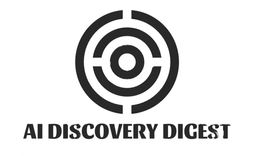Preserving culture is more than just keeping traditions alive; it’s about honoring our heritage, celebrating diversity, and safeguarding the stories that make us who we are. In a rapidly evolving world, where cultural identity can sometimes get lost in the shuffle of modernization, finding ways to preserve and protect our rich tapestry of traditions has become increasingly vital.
Enter technology! From smartphones to social media platforms, technology has revolutionized nearly every aspect of our lives. And when it comes to cultural preservation campaigns, one tool stands out among the rest: Artificial Intelligence (AI). With its ability to analyze vast amounts of data and learn from patterns, AI offers an unprecedented opportunity to enhance our efforts in safeguarding and promoting diverse cultures worldwide.
We’ll explore how AI can be harnessed as a powerful ally in cultural preservation campaigns. We’ll delve into its functionality and examine real-life case studies that demonstrate its successful implementation. But before we dive into these exciting advancements, let’s take a closer look at why cultural preservation matters so much in today’s fast-paced world. So grab your virtual passport as we embark on this technological journey through time!
The Role of Technology in Cultural Preservation
Technology plays a crucial role in the preservation of cultural heritage. In today’s digital age, advancements in technology have provided us with innovative tools and methods to document, protect, and share our rich cultural traditions with the world.
One of the key benefits of technology is its ability to capture and store vast amounts of information. Through high-resolution imaging techniques, 3D modeling, and virtual reality applications, we can now digitally preserve artifacts and historical sites that may be at risk due to natural disasters or human activities.
Technology has made it easier for researchers and historians to access valuable archival materials without physically traveling to distant locations. Digital archives allow for easy retrieval of documents, photographs, recordings, and other resources that are vital in understanding different cultures.
Technology has enabled communities to participate actively in preserving their own cultural heritage. Social media platforms provide a space for individuals from diverse backgrounds to connect and share their stories. This inclusive approach ensures that multiple perspectives are represented when documenting culture.
Technological advancements such as machine learning algorithms have greatly facilitated the process of cataloging massive collections found in museums or libraries. AI-powered systems can analyze large volumes of data efficiently while reducing human error.
Technology continues to revolutionize how we approach cultural preservation efforts. By harnessing the power of technology through AI-driven solutions like digitization projects or immersive experiences through virtual reality platforms – we can ensure that future generations will have access not only to physical artifacts but also an immersive understanding of our collective past.

Understanding AI and Its Functionality
AI, or Artificial Intelligence, is a term that has become increasingly popular in recent years. But what does it really mean? Simply put, AI refers to the development of computer systems that can perform tasks and make decisions without direct human intervention. It is essentially about creating machines that can think and learn like humans.
The functionality of AI is based on complex algorithms and programming techniques that allow computers to process vast amounts of data, recognize patterns, and make predictions. These algorithms enable AI systems to analyze information from various sources and derive meaningful insights.
One key aspect of AI functionality is machine learning. This involves training an AI system by providing it with large datasets so that it can learn from examples and improve its performance over time. Through this iterative process, the system becomes more accurate in decision-making and problem-solving.
Another important feature of AI functionality is natural language processing (NLP). NLP enables computers to understand human language in a way that goes beyond simple keyword matching. Instead, it allows for the comprehension of context, sentiment analysis, and even generating human-like responses.
Computer vision is another area where AI demonstrates its utility. By analyzing visual data such as images or videos using advanced algorithms, computers can identify objects, detect faces or emotions accurately.
How AI Can Be Used in Cultural Preservation Campaigns
AI, or artificial intelligence, has emerged as a powerful tool that can revolutionize cultural preservation campaigns. With its ability to analyze vast amounts of data and perform complex tasks, AI offers new possibilities for preserving and promoting diverse cultures across the globe.
One way AI can be used in cultural preservation is through digital archiving. By digitizing artifacts and historical documents, AI algorithms can help preserve them for future generations. These algorithms can also analyze the content of these materials, making them more accessible by organizing and categorizing information.
Another application of AI in cultural preservation is language translation. Language barriers often hinder our understanding of different cultures. However, with AI-powered translation tools becoming increasingly sophisticated, it is now possible to bridge this gap. These tools use machine learning algorithms to improve accuracy over time and enable effective communication between cultures.
AI has the potential to enhance virtual reality experiences related to cultural heritage sites. Through advanced computer vision technology, AI algorithms can recreate historical locations virtually and allow users to explore them remotely. This not only preserves these sites but also provides people with immersive experiences that promote appreciation for different cultures.
Social media platforms have become vital channels for cultural exchange. Using AI-based sentiment analysis tools enables organizations to monitor conversations about specific cultures or traditions online. This allows campaign organizers to gauge public sentiment towards their efforts and tailor their strategies accordingly.
In addition to these applications, facial recognition technology powered by AI could assist in identifying individuals depicted in historical photographs or artworks when there are no accompanying records available—a valuable resource for researchers trying to piece together forgotten narratives from the past.
By harnessing the power of artificial intelligence technologies like machine learning and computer vision into cultural preservation campaigns—organizations around the world have an opportunity not just simply document but actively engage audiences while preserving humanity’s rich tapestry of traditions!
Successful Implementation of AI in Cultural Preservation
- The Great Barrier Reef Project:
AI has been instrumental in the successful implementation of cultural preservation efforts around the world. One notable example is the use of AI technology to monitor and protect the Great Barrier Reef in Australia. By analyzing satellite imagery and underwater data, AI algorithms can identify coral bleaching events and track changes in marine biodiversity with remarkable accuracy. - Digitizing Ancient Artifacts:
In another case study, AI was utilized to digitize ancient artifacts at risk of deterioration or loss. Museums and cultural institutions have employed machine learning algorithms to scan and analyze high-resolution images of fragile artworks, resulting in detailed digital replicas that can be accessed by researchers, historians, and enthusiasts worldwide. - Language Revitalization Programs:
AI-powered language revitalization programs are making a significant impact on preserving endangered languages. Through speech recognition technologies and natural language processing algorithms, these programs enable communities to document their native languages more efficiently while providing tools for language learners to practice pronunciation skills. - Augmented Reality Heritage Tours:
Using augmented reality (AR), AI has transformed heritage tours into immersive experiences that bring historical sites back to life. Visitors equipped with AR-enabled devices can explore ancient ruins or historic landmarks while receiving real-time information about their significance through interactive visuals overlaid onto the physical environment. - Wildlife Conservation Efforts:
AI-driven solutions have also played a crucial role in wildlife conservation efforts by enabling more accurate identification and tracking of endangered species such as elephants or tigers through image recognition techniques applied to camera trap data.
These case studies highlight just a few examples where AI has proven its potential for enhancing cultural preservation campaigns across various domains ranging from environmental protection to heritage conservation.
Potential Challenges and Limitations of Using AI in Cultural Preservation
The use of AI in cultural preservation campaigns undoubtedly holds immense potential, but it is vital to acknowledge the challenges and limitations that come with its implementation. One significant challenge lies in the accuracy and reliability of AI algorithms. While AI can analyze vast amounts of data quickly, there is still a risk of errors or biases in the results generated.
Another limitation is the requirement for extensive digitization efforts. Before AI can be utilized effectively, cultural artifacts and resources need to be converted into digital formats. This process can be time-consuming and costly, particularly for organizations with limited resources.
There may be concerns regarding privacy and ethics when using AI in cultural preservation. As these technologies rely on collecting and analyzing personal data, it raises questions about consent, ownership, and control over sensitive information.
Another challenge relates to the potential loss of human expertise and intuition. While AI systems excel at pattern recognition, they lack a deep understanding of cultural context that humans possess naturally through their experiences.
Access to advanced technology might not be readily available or affordable for all communities involved in cultural preservation efforts. This creates a digital divide where some cultures may benefit more from technological advancements than others.
It’s important to consider the risks associated with over-reliance on technology. Relying solely on AI systems could potentially diminish human involvement in decision-making processes related to cultural preservation projects.
While these challenges are worth acknowledging and addressing as we integrate AI into cultural preservation campaigns further,it should not overshadow our excitement about the possibilities this technology offers us!
Future Possibilities and Implications for Cultural Preservation
As technology continues to advance at a rapid pace, the future holds exciting possibilities for cultural preservation. Artificial Intelligence (AI) is poised to play a crucial role in this endeavor, offering innovative solutions that can enhance and safeguard our rich heritage.
One potential application of AI lies in the realm of digital restoration. With AI algorithms trained on vast databases of historical images and artifacts, it becomes possible to reconstruct damaged or destroyed cultural treasures with incredible precision. This not only helps preserve their physical form but also allows future generations to experience them in their original splendor.
Another area where AI can make a significant impact is in language preservation. Many endangered languages face the risk of extinction, as fewer people speak them fluently. By leveraging machine learning techniques, AI systems can be trained to recognize and analyze these languages, enabling researchers to document and study them more effectively.
AI-powered virtual reality (VR) experiences have the potential to revolutionize how we engage with cultural heritage sites. Imagine being able to explore ancient ruins from the comfort of your own home or interact with lifelike representations of historical figures through immersive VR simulations. These technologies have the power to bring history alive like never before.
AI has the ability to assist museums and institutions by analyzing massive amounts of data related to artworks, artifacts, or archaeological findings swiftly and accurately. This enables curators and researchers alike to gain deeper insights into various aspects such as artistic styles or historical contexts effortlessly.
One concern revolves around ethical considerations when using AI algorithms for restoration purposes – striking a balance between preserving authenticity while utilizing advanced technologies can be delicate.
There are also concerns about access disparities – ensuring that these cutting-edge tools are available not only at prestigious institutions but also accessible on community levels will be essential.
The Importance of Integrating AI into Cultural Preservation Efforts
It is evident that cultural preservation plays a vital role in safeguarding our diverse heritage for future generations. With the rapid advancement of technology, integrating AI into cultural preservation campaigns has become not only beneficial but also necessary.
AI offers unparalleled capabilities to enhance various aspects of cultural preservation. Its ability to analyze vast amounts of data, automate tasks, and provide valuable insights greatly accelerates the documentation and restoration processes. By utilizing AI tools such as image recognition and natural language processing, we can efficiently organize and digitize historical records, artifacts, and texts.
AI-powered technologies like virtual reality (VR) and augmented reality (AR) enable us to create immersive experiences that bring forgotten cultures back to life. These cutting-edge applications allow people from all walks of life to engage with history in an interactive way, fostering a deeper understanding and appreciation for different traditions.
Despite its undeniable benefits, there are potential challenges and limitations associated with using AI in cultural preservation. Ethical considerations regarding data privacy must be carefully addressed when handling sensitive information about indigenous communities or culturally significant materials.
There may be disparities between regions or countries when it comes to access to advanced technologies like AI due to economic factors or infrastructure limitations. It is crucial to ensure inclusivity by providing equal opportunities for all communities worldwide in order to preserve their unique heritage.
Looking towards the future implications of integrating AI into cultural preservation efforts holds great promise. As technology continues evolving at an unprecedented pace, we can expect further advancements in areas such as machine learning algorithms capable of deciphering ancient scripts or reconstructing damaged artworks digitally.


